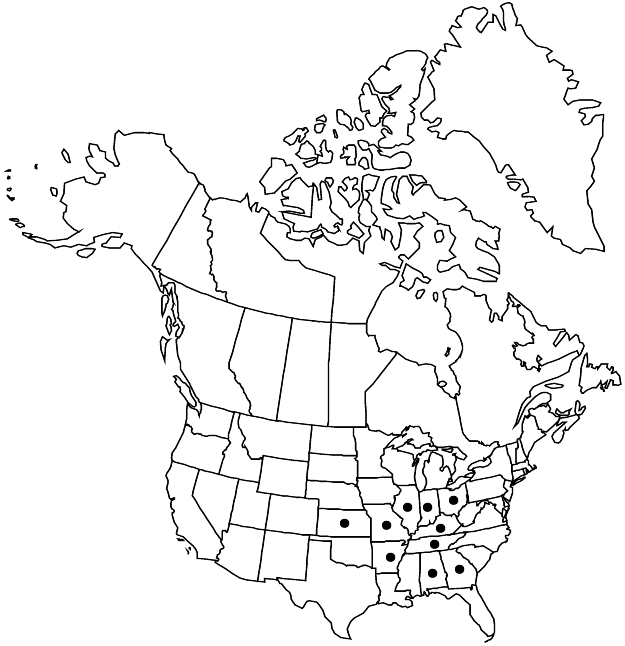Difference between revisions of "Silene regia"
Bot. Mag. 41: plate 1724. 1815.
FNA>Volume Importer |
FNA>Volume Importer |
(No difference)
| |
Revision as of 20:08, 24 September 2019
Plants perennial; taproot stout, fleshy. Stems several, erect, simple proximal to inflorescence, 50–160 cm, glabrous to sparsely retrorse-puberulent proximally, more densely so and glandular distally. Leaves withered towards base at anthesis, in 10–20 pairs, sessile, gradually reduced distally; blade 3-veined, lanceolate to ovate, rounded into base, 4–12 cm × 20–50 mm, apex acute, not acuminate, glabrous to scabrous-puberulent adaxially, scabrous-puberulent abaxially. Inflorescences terminal, cymose, compound, many-flowered, bracteate, pedunculate, 15–25(–30) × 5–10 cm; bracts lanceolate, 3–30 mm; peduncle ascending. Pedicels 1–4 times longer than calyx, stipitate-glandular, puberulent. Flowers: calyx prominently 10-veined, tubular in flower, 18–25 × 3–4 mm, swelling in middle to 6–9 mm in fruit, umbilicate, constricted near base around carpophore, glandular-pubescent, especially on veins, veins green, lobes 2–4 mm, midrib lanceolate, margins often red tinged, broad, membranous; corolla scarlet, clawed, claw equaling calyx, limb oblong to elliptic, unlobed, rarely emarginate or shallowly 2-lobed, 10–20 × 5–6 mm, apex rounded, appendages 2, tubular, 2–4 mm; stamens exserted; styles 3(–5), exserted. Capsules ovoid-ellipsoid, narrowed at both ends, equaling calyx, opening by 6 (or 8 or 10) ascending teeth; carpophore 3–5 mm. Seeds dark reddish brown, reniform, 1.5–2 mm, with smooth and glossy, flat or concave sides, margins angled, shallowly rugose. 2n = 48.
Phenology: Flowering summer–fall.
Habitat: Dry prairies, rocky open woods, woodland edges and thickets
Elevation: 100-400 m
Distribution

Ala., Ark., Ga., Ill., Ind., Kans., Ky., Mo., Ohio, Tenn.
Discussion
Silene regia is a very distinct, spectacular species with tall stems, a narrow, many-flowered inflorescence, and bright red petals. It is probably related to S. laciniata via S. subciliata.
Silene regia is in the Center for Plant Conservation’s National Collection of Endangered Plants.
Selected References
None.